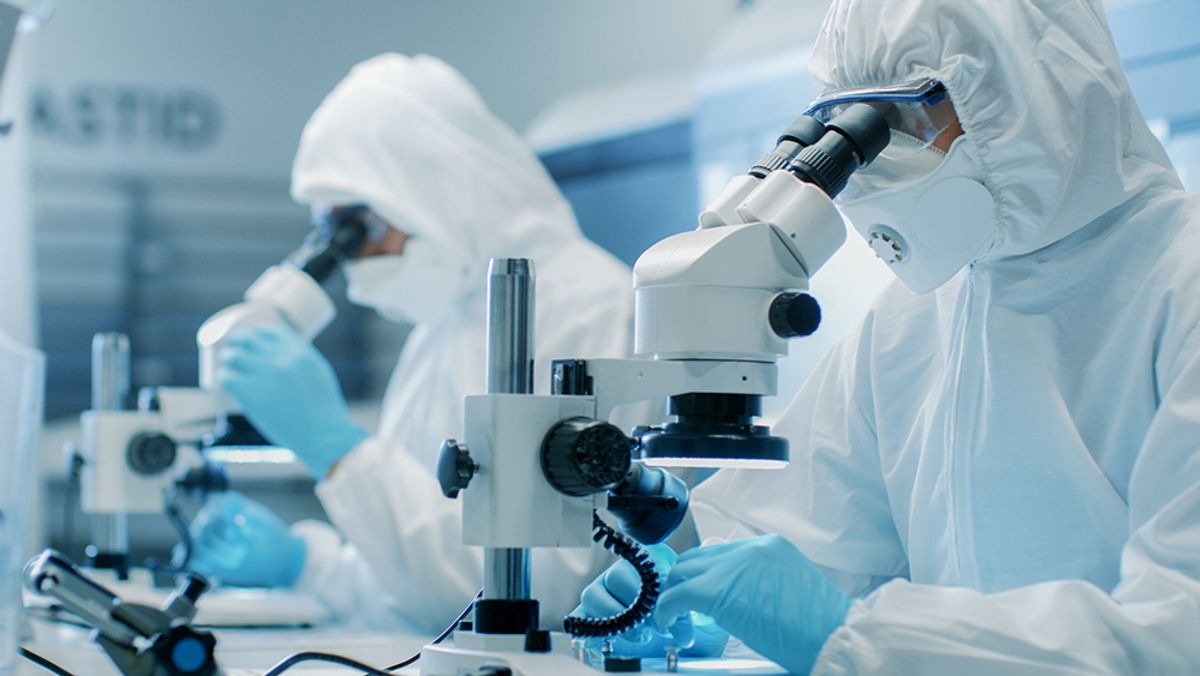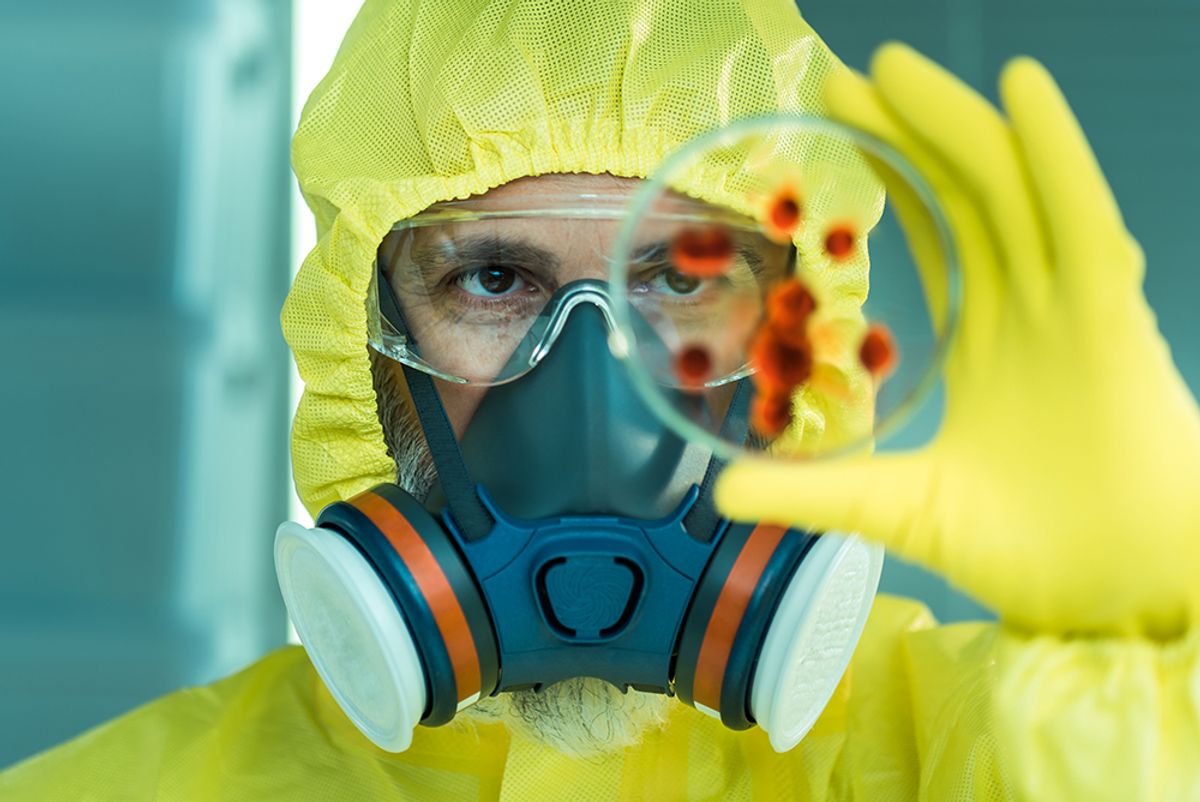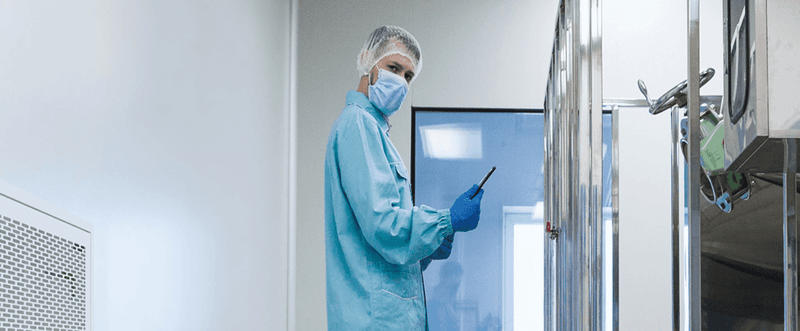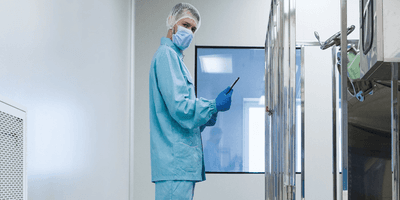Cleaning the Air: Protecting Processes, People, and the Environment
How the right air filtration solutions can enhance research integrity, lab safety, and sustainability
The air in your lab infiltrates every aspect of your work. If not properly maintained, it can jeopardize experimental integrity, compromise the health and safety of lab personnel, and increase environmental impact. The good news? These risks can be mitigated with a holistic approach to air quality management.
This article delves into air filtration challenges, considerations, and solutions, empowering lab managers to make informed decisions that safeguard their labs.
Protecting processes
Kai stared at the sensor data in frustration. The airflow in their cleanroom seemed stuck at 0.12 m3/h, where they should be seeing 0.18 m3/h. The particle count was within spec, but they were teetering on the edge, one minor incident from having to halt operations. Kai had checked everything he could think of. The filters were new, the electrical seemed fine, the system was checking out, and the building’s air intake was clear. But still, the system was underperforming. There had to be something upstream.
After hours of tracing the intake through the facility, Kai and his lead technician, Maria, found the culprit—a set of prefilters caked with dust and debris.
“Did you know these were here?” Maria asked, brow winkled.
“I didn’t,” Kai replied. They weren’t in any documentation, and the facilities team hadn’t known about them either. Whoever originally installed these was long gone.
As Kai swiped through layers of dust to snap identifying images for replacements, he decided it wasn’t surprising. With so much focus on the terminal filters, prefilters were easily forgotten. He was just happy they found it in time to avoid a costly shutdown.
In a lab, particulate, microbial, and molecular contaminants can compromise air quality. Particulate contaminants are fine, suspended particles that can also carry microbial contaminants like bacteria, fungi, viruses, and spores. Molecular contaminants, on the other hand, exist as vapors or gases and are 1,000 to 10,000 times finer than particulates.
Filtering incoming supply air helps keep pollutant levels low, preventing sample contamination and reducing time and resource wastage. However, choosing the right filter can be complex since different filters target different contaminants.
For particulate and microbial filtration, labs can refer to ISO 14644-1, which classifies cleanrooms and other controlled environments based on acceptable particle concentrations. For cleanrooms rated ISO Class 5 (3,520 particles/m3 of air for particles ≥ 0.5 µm) to ISO Class 8 (3,520,000 particles/m3 of air for particles ≥ 0.5 µm), high-efficiency particulate air (HEPA) filters are typically used. These filters have an efficiency of 99.95 to 99.995 percent at the most penetrating particle size (0.1-0.2 µm). For ISO Class 3 (35 particles/m3 of air for particles ≥ 0.5 µm) to ISO Class 4 (352 particles/m3 of air for particles ≥ 0.5 µm) ratings, ultra-low penetration air (ULPA) filters are used, capturing a minimum of 99.9995 percent of particles as small as 0.12 µm. ISO 29463/EN 1822 classifies HEPA and ULPA filters into different performance classes based on their efficiency, helping labs choose a filter that meets their needs and applicable standards.
Molecular filters, also known as chemical or gas phase filters, are designed to adsorb and neutralize molecular contaminants. These filters can use multiple types of porous filtration media—each with different airflow capabilities—including activated carbon for broad-spectrum volatile organic compound (VOC) removal and impregnated carbon or activated alumina for targeted gas removal. When an application produces different molecular contaminants, multiple stages of molecular filters can be used. Ultimately, the correct filtration media for a given application should be determined by the type and concentration of the contaminants, their required contact time for adsorption, and the desired system lifetime. To ensure filter efficacy and compliance, ISO standards should be considered. ISO 10121-1/2 is the global standard for molecular air filtration, focusing on the efficiency of filtration media and filters against different molecular contaminants. ISO 14644-8 provides guidelines for classifying and quantifying airborne molecular contaminants in cleanrooms and other controlled environments.
Protecting lab processes also means preventing downtime. Using durable and reliable air filtration systems is crucial in this respect. Such systems are designed to endure continuous operation with minimal maintenance, saving labs time and money. To further improve filter lifespan and efficacy, prefilters, which capture larger particles, can be installed. Regularly monitoring and replacing filters and prefilters ensures uninterrupted operation.
Additionally, proper filter selection can reduce downtime associated with sterilization and decontamination. These procedures, commonly performed with hydrogen peroxide or ethylene oxide, require lengthy application and aeration periods to ensure sufficient coverage and removal of residual vapors that could harm personnel and sensitive experiments. High-efficiency air filtration systems can optimize the distribution and subsequent removal of these toxic chemicals, reducing the risk of exposure and enabling faster recovery for enhanced productivity.

Protecting people
Ben stepped out of the lab for some fresh air, hoping to clear his mind. As he stood in the hallway he noticed his throbbing headache—the third one this week—began to subside. But this sudden relief was quickly taken over by a feeling of unease. Why did his headaches always seem to disappear when he left the lab? Was it something in the air?
The presence of contaminants can not only impact research fidelity but also lead to health and safety risks. Particulate contaminants can irritate the human respiratory and cardiovascular systems and transport microbial contaminants, exposing individuals to microorganisms that can cause serious illness and infection. Molecular contaminants can cause allergies, headaches, irritation, organ damage, and even death.
HEPA, ULPA, and molecular filters significantly reduce exposure to these contaminants. When multiple contaminants are present, it may be necessary to use a combination of these filters. For example, a cleanroom might use HEPA filters to remove particulates and microorganisms, and molecular filters to adsorb VOCs.
Given the severity of these risks, labs must have dependable filtration solutions. Lab managers should look for filters that have been tested, certified, and labeled, ensuring they meet the required standards for efficiency, airflow, and resistance.

Protecting the environment
Elena leaned forward in her chair, captivated by today’s green lab talk. After countless presentations on freezer and fume hood energy consumption, this was finally something new. Could air filter design really impact energy usage? “Pressure drop,” the speaker explained, “reflects the resistance air encounters when passing through the filter. The higher the resistance, the harder the system works.”
Intrigued by the potential savings, Elena’s thoughts turned to her lab. Were they using the most efficient filters? As the speaker continued, “The pressure drop isn’t static and increases with use, so it’s important to stay on top of replacements,” she made a mental note to check their filter specs.
A few months later, as Elena scanned the lab’s utility bill, a grin spread across her face. The replacement filters they’d installed after the talk were paying off! These numbers were exactly what they needed to build a case for adoption across all sites.
Proper exhaust air filters capture potentially harmful contaminants before they’re released into the atmosphere. This process controls emissions and protects human health and the environment. However, optimal environmental protection requires consideration of both filtration and energy efficiency.
The energy required to run filtration systems can account for 70 percent of a filter’s total cost. Using energy-efficient filters with a low average pressure drop can help reduce this. To maintain the expected efficiency level, filters should be replaced when the pressure drop doubles the initial value, at the latest. Durable, high-quality filters with longer lifespans can further reduce environmental impact by minimizing resource consumption and waste. For fine filters in HVAC systems, labs can use ISO 16890 efficiency standards with Eurovent 4/21 energy standards, which grade filter performance from A+—the most energy efficient—to E.

Breathing easy with sustainable solutions
For over 60 years, Camfil has provided air filtration solutions to protect people, processes, and the environment. As part of this mission, Camfil ensures what’s on the box is in the box. Each HEPA, ULPA, molecular, and HVAC filter is manufactured in their ISO-certified facilities and certified based on local, regional, and international standards. For HEPA and ULPA filters these come with individual test reports. This rigorous process ensures efficiency and longevity, reducing the total cost of ownership.
Using advanced life cycle assessment tools, Camfil considers its environmental impact at every stage of product development, from material selection and manufacturing to transportation, usage, and disposal. This holistic approach ensures their offerings are not only effective but also sustainable. Additionally, Camfil’s Clean Room and Energy Optimization (CREO) software helps labs reduce emissions and maintain efficiency by calculating their estimated energy consumption, life cycle cost, and cleanliness level based on different cleanroom configurations and filters.
Through innovative design, precise process control, and a strong customer focus, Camfil ultimately creates air filtration solutions that help us all breathe easier.
Learn about Camfil’s solutions for lab environments at www.camfil.com


